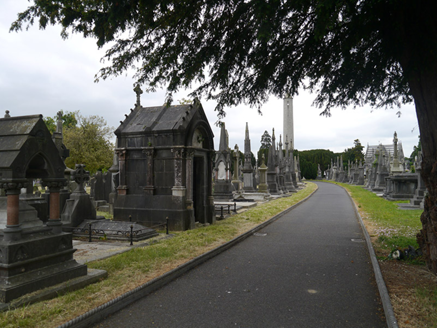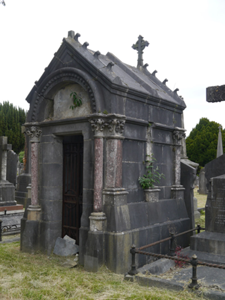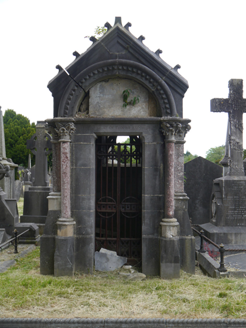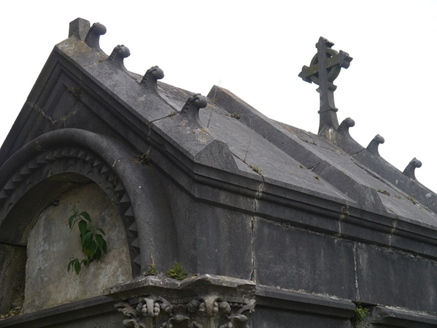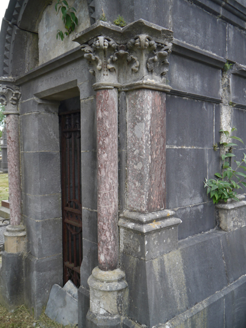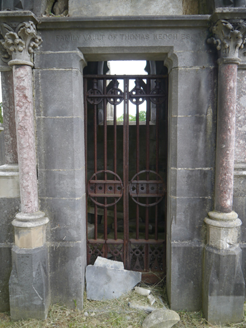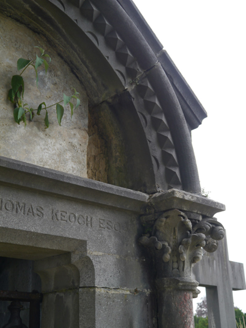Survey Data
Reg No
50130073
Rating
Regional
Categories of Special Interest
Architectural, Artistic, Social
Original Use
Grave monument
In Use As
Grave monument
Date
1870 - 1890
Coordinates
314725, 237126
Date Recorded
12/06/2018
Date Updated
--/--/--
Description
Freestanding limestone mausoleum, erected c. 1880. Pitched stone roof divided by three ribs, outer ribs having crockets, Celtic cross finial to east (rear) apex, and corniced eaves. Ashlar limestone walling over battered coping to plinth; red marble pilasters to corners and mid-section, having stiff-leaf capitals with corresponding stringcourses. Pointed-arch window opening to east gable with vestigial cusped tracery and flush chamfered sill. Shouldered square-headed doorway to west gable, with inscription above, flanked by red marble colonnettes with chevron detail and stiff-leaf capitals, round-headed archivolt over with nail-head moulding to blind panel; decorative cast-iron double-leaf gate with geometric panels. Set in Glasnevin Cemetery south of O'Connell Circle.
Appraisal
A late nineteenth-century mausoleum in limestone and marble, characterized by good proportions and high-quality craftsmanship, prominently located on the main north-south axis in Glasnevin Cemetery, close to the O'Connell Circle. It is executed in the style of a miniature chapel, distinguished by a curious amalgam of Romanesque and Gothic detailing that reflects the architectural eclecticism of the period. Mausolea such as this were commissioned by wealthiest families, conceived in both design and position to reflect status and social standing. It bears a simple inscription: 'Family vault of Thomas Keogh Esq.', and is among a number of notable monuments of architectural merit within the cemetery. Originally known as Prospect Cemetery, this burial ground was opened in 1832 following a successful campaign by Daniel O'Connell to establish a civic, non-denominational cemetery. It holds the graves and memorials of over one million people, including many notable citizens.
